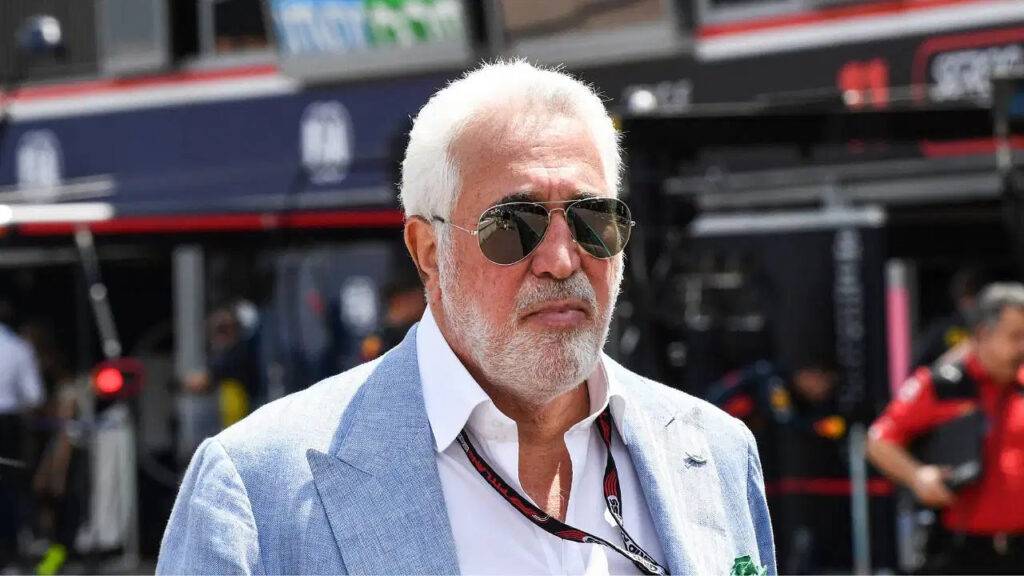Ever wondered who owns Aston Martin? Well, buckle up because we're diving deep into the world of luxury cars and uncovering the story behind this legendary brand. Aston Martin has been turning heads with its sleek designs and powerful engines for over a century. But who exactly owns this iconic car manufacturer? Let's find out!
Aston Martin is more than just a car brand; it's a symbol of luxury, elegance, and performance. From James Bond's trusty ride to the dreams of car enthusiasts worldwide, Aston Martin has carved a niche for itself in the automotive industry. But as we peel back the layers, you'll discover that the ownership of this brand is a fascinating tale filled with twists and turns.
In this article, we'll take you on a journey through Aston Martin's history, current ownership, and future prospects. So, whether you're a die-hard fan of the brand or just curious about who's behind the wheel of Aston Martin's business, you're in for a wild ride!
Read also:Josh Brolins Mother A Closer Look At The Woman Who Shaped An Iconic Actor
Table of Contents
- Aston Martin's Rich History
- Who Owns Aston Martin Today?
- Biography of Key Owners
- Financial Performance and Ownership Structure
- Major Investors and Stakeholders
- Future Plans and Vision
- Impact on the Global Car Market
- Competitors in the Luxury Car Segment
- Challenges Faced by Aston Martin
- Final Thoughts: Who Owns Aston Martin?
Aston Martin's Rich History
Let's rewind the clock and explore how Aston Martin became the powerhouse it is today. Founded way back in 1913 by Lionel Martin and Robert Bamford, the brand started as Bamford & Martin before evolving into Aston Martin. The name "Aston" comes from Aston Clinton Hillclimb, a race where Lionel Martin achieved success with his modified car.
Throughout its history, Aston Martin has seen numerous ownership changes. The brand has been owned by British businessmen, American conglomerates, and even a Malaysian-led consortium. Each owner brought their own vision and resources, shaping the brand into what it is today.
Key Milestones in Aston Martin's Journey
- 1947: David Brown acquires Aston Martin, marking a significant turning point in its history.
- 1987: Ford steps in as the majority shareholder, providing a much-needed financial boost.
- 2007: A consortium led by Prodrive's David Richards takes over, signaling a return to British ownership.
Who Owns Aston Martin Today?
Fast forward to the present day, and Aston Martin is a publicly traded company listed on the London Stock Exchange. But who exactly owns the majority stake? The answer lies in a mix of institutional investors, billionaire entrepreneurs, and even a Formula 1 legend.
Lawrence Stroll, the billionaire chairman of Aston Martin and owner of the Racing Point Formula 1 team, holds a significant stake in the company. His investment in 2020 injected much-needed capital into the brand, helping it weather financial storms and plan for the future.
Breakdown of Ownership
Here's a quick snapshot of Aston Martin's current ownership structure:
- Lawrence Stroll: Approximately 20% stake
- Institutional Investors: Combined holdings of around 40%
- Public Shareholders: The remaining 40% is publicly traded
Biography of Key Owners
Let's take a closer look at the individuals who play a pivotal role in Aston Martin's ownership and success.
Read also:Sophie Rain Bobbs A Rising Star In The Spotlight
Lawrence Stroll
Lawrence Stroll is a Canadian billionaire with a passion for luxury brands. Known for his involvement in fashion and motorsport, Stroll's acquisition of a stake in Aston Martin marked his entry into the automotive world. His vision for the brand includes expanding its product lineup and strengthening its global presence.
| Name | Lawrence Stroll |
|---|---|
| Age | 74 years |
| Net Worth | Approximately $2.9 billion |
| Role in Aston Martin | Executive Chairman |
Financial Performance and Ownership Structure
Understanding Aston Martin's financial performance is crucial to grasping the dynamics of its ownership. In recent years, the company has faced challenges, including supply chain disruptions and global economic uncertainty. However, with Lawrence Stroll's investment and strategic partnerships, Aston Martin is on the path to recovery.
In 2022, Aston Martin reported a revenue of £1.4 billion, marking a significant improvement from previous years. The company's focus on expanding its model range and tapping into emerging markets has contributed to this growth.
Ownership Structure in Numbers
Here's a breakdown of Aston Martin's ownership structure as of 2023:
- Lawrence Stroll: 20%
- Institutional Investors: 40%
- Public Shareholders: 40%
Major Investors and Stakeholders
Beyond Lawrence Stroll, Aston Martin has attracted interest from several major investors and stakeholders. These include:
- Yew Tree Investment: A consortium of investors supporting Aston Martin's growth plans.
- Advent International: A private equity firm with a significant stake in the company.
- Public Investors: Shareholders from around the world who believe in Aston Martin's potential.
Future Plans and Vision
Aston Martin's future is filled with exciting prospects. Under Lawrence Stroll's leadership, the company is set to launch new models, including electric vehicles, to cater to the evolving demands of the automotive market. The brand's collaboration with Mercedes-Benz for advanced technology integration is also a key part of its strategy.
Additionally, Aston Martin aims to strengthen its presence in key markets such as China, the Middle East, and North America. With a focus on sustainability and innovation, the brand is well-positioned to thrive in the years to come.
Upcoming Models
- Aston Martin Valhalla: A hybrid hypercar set to redefine performance.
- Aston Martin Lagonda: An all-electric luxury SUV targeting the premium segment.
Impact on the Global Car Market
Aston Martin's influence on the global car market extends beyond its iconic status. The brand's commitment to luxury and performance sets a benchmark for competitors in the segment. Its foray into electric vehicles also reflects the broader industry trend towards sustainability.
Moreover, Aston Martin's partnerships with Formula 1 and luxury brands enhance its reputation and appeal. These collaborations not only boost brand visibility but also drive innovation in design and technology.
Competitors in the Luxury Car Segment
In the luxury car segment, Aston Martin competes with heavyweights like Ferrari, Porsche, and Bentley. Each brand offers its unique proposition, but Aston Martin stands out with its blend of British heritage and cutting-edge engineering.
However, the competition is fierce, and Aston Martin must continue to innovate to maintain its edge. By focusing on exclusivity, performance, and sustainability, the brand aims to carve out a distinct niche in the market.
Challenges Faced by Aston Martin
Despite its successes, Aston Martin faces several challenges. The global semiconductor shortage, supply chain disruptions, and economic uncertainties pose significant risks to the company's operations. Additionally, the shift towards electric vehicles requires substantial investment in research and development.
However, with a strong ownership structure and a clear vision for the future, Aston Martin is well-equipped to overcome these challenges. The brand's commitment to quality and innovation will undoubtedly play a crucial role in its continued success.
Final Thoughts: Who Owns Aston Martin?
In conclusion, Aston Martin is owned by a mix of billionaire entrepreneurs, institutional investors, and public shareholders. Lawrence Stroll's leadership and vision have been instrumental in shaping the brand's future, and his investments have provided the necessary resources to drive growth.
As Aston Martin continues to evolve, its focus on luxury, performance, and sustainability positions it as a leader in the automotive industry. So, the next time you see an Aston Martin cruising down the road, remember the fascinating story behind its ownership and the passion that drives this iconic brand.
What are your thoughts on Aston Martin's ownership and future prospects? Feel free to share your views in the comments below, and don't forget to check out our other articles for more insights into the world of luxury cars!



